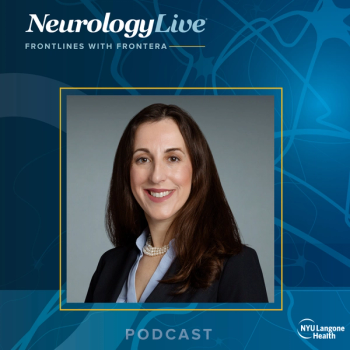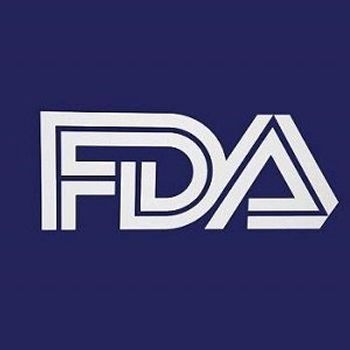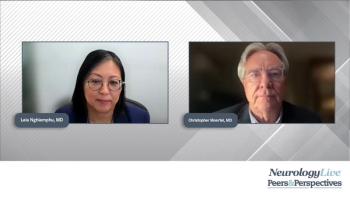
Actigraphy-Based Nap Detection Algorithm Highlights Increased Napping in Narcolepsy Type 1, Reduced Napping With TAK-861
Key Takeaways
- The nap-detection algorithm accurately identified naps and correlated with self-reported sleepiness, validated in a large cohort.
- TAK-861 treatment significantly increased nap-free days and reduced daytime sleep minutes in NT1 patients.
A newly presented actigraphy-based algorithm demonstrated high accuracy in detecting daytime naps, offering insights into napping behavior changes in patients with narcolepsy type 1.
A newly developed wrist-worn actigraphy-based nap-detection algorithm demonstrated high accuracy in identifying daytime naps and revealed key differences in nap patterns between patients with narcolepsy type 1 (NT1) untreated and treated with TAK-861 (Takeda Pharmaceuticals), an investigational orexin receptor 2-selective agonist. Presented at the
In the study, investigators first validated the nap-detection algorithm using manually annotated nap data from 2237 participants in the Multi-Ethnic Study of Atherosclerosis (MESA), achieving 86.5% sensitivity and an F1 area of 84.6% across 7 days. Presented by lead author Raúl Torres, associate director of data science at Takeda, statistically significant correlations were observed between napping behavior and self-reported sleepiness via the Epworth Sleepiness Scale (ESS), with nominal correlations among participants from the MESA validation cohort (R = -0.16, P <.001; R = 0.15, P <.001, respectively).
Researchers then had the algorithm be applied in a noninterventional study (NCT04445129) of 16 participants with NT1 and 16 matched healthy controls, as well as in a phase 2 interventional trial (NCT05687903) of TAK-861 involving 112 participants with NT1. Across these studies, the algorithm measured the proportion of nap-free days and total daytime sleep minutes on days with more than 1 nap. In the noninterventional study, participants with NT1 demonstrated 11.5 fewer nap-free days (P <.001) and 37.5 more minutes of daytime sleep (P <.001) over a 4-week period compared with healthy controls.
In the phase 2 interventional study of TAK-861, participants with NT1 experienced statistically significant increases in nap-free days and reductions in daily daytime sleep minutes across all TAK-861 dose groups (0.5mg/0.5mg, n = 23; 2mg/2mg, n = 21; 2mg/5mg, n = 23; 7mg, n = 23; all P <.001) compared with baseline. Notably, authors reported no significant changes observed in the placebo group of the study (n = 22). Thus, the results showed an increase in napping among untreated participants with NT1 and a substantially reduced daytime napping in TAK-861-treated participants with NT1.
At the 2024 SLEEP Annual Meeting, held June 1-5, in Houston, Texas, data from the
All doses of TAK-861 significantly and clinically meaningfully improved subjective wakefulness as measured by Epworth Sleepiness Scale (ESS), a secondary end point. At week 8, the percentage of participants reaching the normative range of ESS less than 10 was 19.0% in placebo, 66.7% in the 0.5 mg/0.5 mg TAK-861 arm, 95.2% in the 2 mg/2 mg arm, 81.8% in the 2 mg/5 mg arm, and 73.9% in the 7 mg QD arm. All improvements were sustained over time.
Treatment with TAK-861 also resulted in significant effects on cataplexy, a common problem for patients with NT1. Over the 8-week period, median weekly cataplexy rate (WRC) was 4.1 in placebo vs 1.4 in the 0.5 mg/0.5 mg group, 0.7 in the 2 mg/2 mg group, 0.7 in the 2 mg/5 mg group, and 4.3 in the 7 mg QD group. In addition, some patients reported insomnia symptoms; however, the majority of these cases were mild or moderate and resolved within 5 days. There were no participants who discontinued because of adverse events (AEs), including insomnia, as well as no insomnia events that required medical intervention.
Throughout the study, TAK-861 was shown to be generally safe, with the most common treatment-emergent adverse events (TEAEs) being insomnia, urinary urgency and frequency, and salivary hypersecretion. There were no cases of hepatotoxicity or visual disturbances reported during the double-blind period or ongoing long-term extension (LTE). Additionally, investigators found no treatment-related serious TEAEs or discontinuations because of TEAEs during the study.
REFERENCES
1. Torres R, Onorati F, Naylor M, et al. Actigraphy-Based Assessment of the Impact of TAK-861 on Daytime Napping in People with Narcolepsy Type 1. Presented at: 2025 SLEEP Annual Meeting; June 8-11; Seattle, WA. ABSTRACT 0846.
2. Takeda’s TAK-861 phase 2b late-breaking data presentations at SLEEP 2024 demonstrate clinically meaningful impact of oral orexin agonist in narcolepsy type 1 compared to placebo. News release. June 3, 2024. Accessed June 14, 2024. https://www.takeda.com/newsroom/newsreleases/2024/tak-861-data-at-sleep-2024-on-narcolepsy-type-1/
Newsletter
Keep your finger on the pulse of neurology—subscribe to NeurologyLive for expert interviews, new data, and breakthrough treatment updates.




















